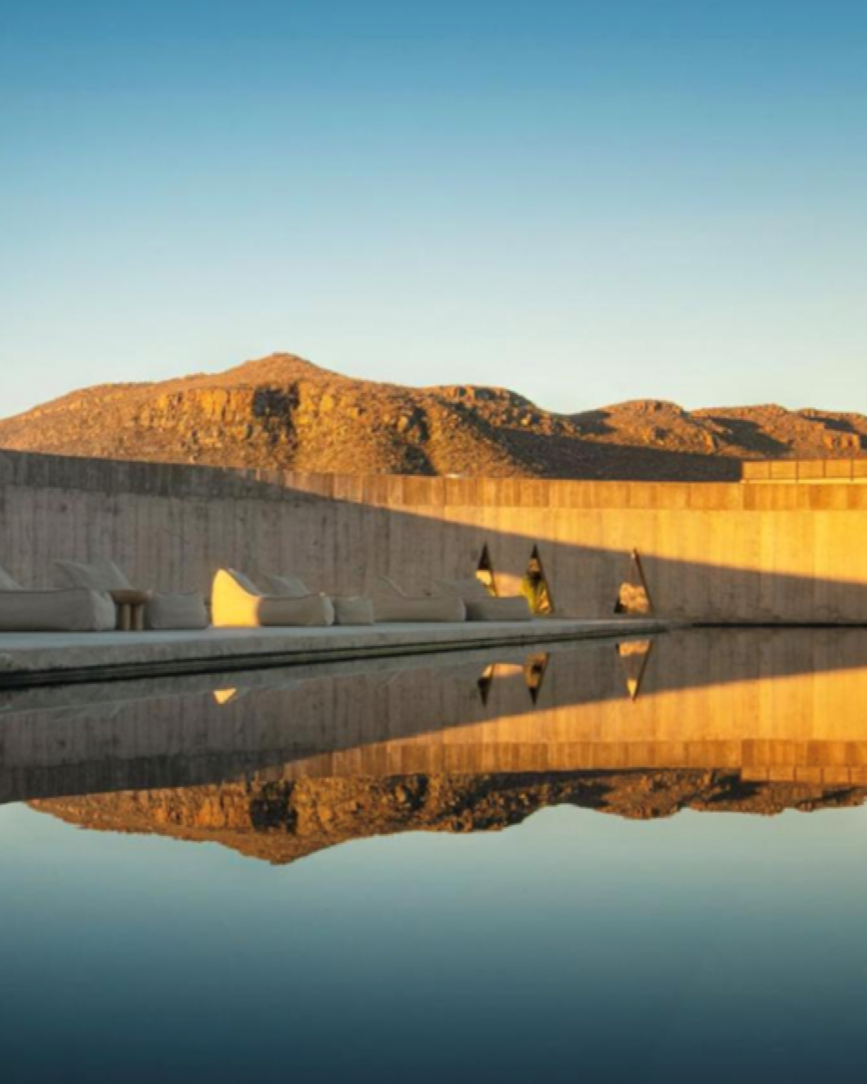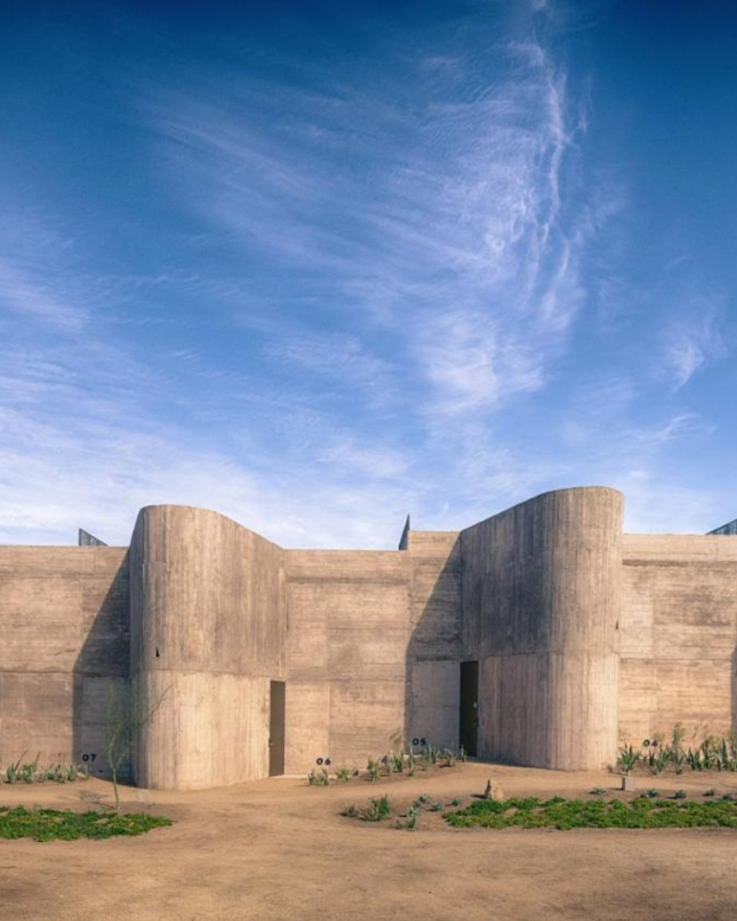Brutalism, an often controversial architectural style, raises questions and admiration in equal measure. Although it seems to belong to a bygone era, far from today's ecological concerns, its symbolic power is appealing to the luxury world.
Brutalism carries a heavy historical heritage. While its name comes from the raw concrete that is its hallmark, this architectural style, focused on a functionalism stripped down to its barest core, was, from the 1950s to the late 1970s, associated with government and institutional buildings in the Eastern Bloc. It also became the signature aesthetics of social housing blocks of suburban areas during that period. In France, under the influence of architects like Le Corbusier, these massive blocks quickly came to be seen as architectural, and even societal, failures due to the social ostracism and squalor they fostered. Many were even blown up in the 1980s and 1990s. In recent years, this much-criticized architectural movement has sparked a surprising resurgence of interest.
It is not necessary to sacrifice the beauty of the original architecture to make a building sustainable
Bruce Redman Becker, developer of the Hotel Marcel and head of the architectural firm Becker + Becker
The release of The Brutalist film a few months ago contributed to reigniting the debate around this divisive style. Having received over 130 awards, including the prestigious Golden Globe for Best Film, as well as Oscars for Best Actor (Adrien Brody) and Best Cinematography. Brady Corbet’s masterpiece shines a light on brutalism through the fictional journey of a Hungarian architect forced to flee Nazi-occupied Europe and to navigate a tumultuous integration into a bourgeois American society rotting in hypocrisy. In the film, brutalism is hailed as a style that embodies purity, not only of form, but of intent as well. A style that hides nothing, and whose interpretation is straightforward.
Although fictional, the film is inspired by the careers of renowned Hungarian architects such as Ernö Goldfinger and Marcel Breuer, whose works today find themselves repurposed in surprising ways.
S'inscrire
Newsletter
Soyez prévenu·e des dernières publications et analyses.
A style that charms the luxury hospitality industry
One of Marcel Breuer's buildings is now home to the prestigious Hotel Marcel, which opened in New Haven in 2022 following a two-year renovation of 6.5 million dollars. After saving it from imminent destruction by acquiring it at the end of 2019 for 1.2 million dollars, Bruce Redman Becker, the hotel’s developer and head of the Becker + Becker architectural firm, succeeded in making the building environmentally sustainable without altering its appearance. He shared during the process: “Here, sustainability means recycling the building. What I wanted to prove with this project is that it’s not necessary to sacrifice the beauty of the original architecture to make a building sustainable.”
While some original brutalist buildings are finding new life, architects inspired by this movement are incorporating its codes into brand-new constructions.
In Mexico, the Paradero Todos Santos Hotel, opened in 2021, offers a brutalist décor spanning over 12’000 square meters for those seeking a luxurious retreat in the Baja California desert.


Architects Yashar Yektajo and Rubén Valdez, heavily inspired by brutalism, managed to evoke the transient nature of the desert despite the massive concrete structure. They conveyed the undulating form of the dunes in the facades, emphasizing the idea of a mirage and a blurred boundary between what is perceived and what exists: “In this project, we aimed to emphasize the dynamism of the natural motion of the desert by exploring and highlighting the topography created by its winds, the elements that make it a gift to the senses, its natural form of creating paths and spaces that appear and disappear as in a landscape of surprises.” A feat that earned them the Prix Versailles for architecture and design.
Pour continuer à lire cet article, abonnez-vous maintenant
CHF 10.- par mois / CHF 99.- par année
- Accès illimité à tous les contenus payants
- Des analyses approfondies sur l'industrie du luxe que vous ne trouverez nulle part ailleurs.
- Des études et rapports sur les principaux défis à venir ainsi que leur décryptage.
- Des articles académiques élaborés par des professeurs et des doctorants membres du Swiss Center for Luxury Research, ainsi qu’un certain nombre d’universités à l’étranger.
- Des événements réservés aux membres pour enrichir vos connaissances et votre réseau.
Partager l'article
Continuez votre lecture
Portugal Heralds a New Era for Tourism
Between white sand beaches and dramatic river valleys, luxurious eco hotels and independent, regenerative projects in Portugal’s Alentejo region are setting an example for the rest to follow.
Luxury Hospitality Continues to Attract Investors in 2025
Hyatt, LVMH, Accor: the luxury hospitality sector witnessed significant investment in 2024, and this trend shows no signs of slowing down in 2025. With strong demand for premium accommodations, the number of ultraluxury hotel rooms is projected to grow by 12% by 2033. A key driver is the sector’s annual return rate of 6% in 2022, a figure expected to remain steady. Here’s our in-depth look.
S'inscrire
Newsletter
Soyez prévenu·e des dernières publications et analyses.